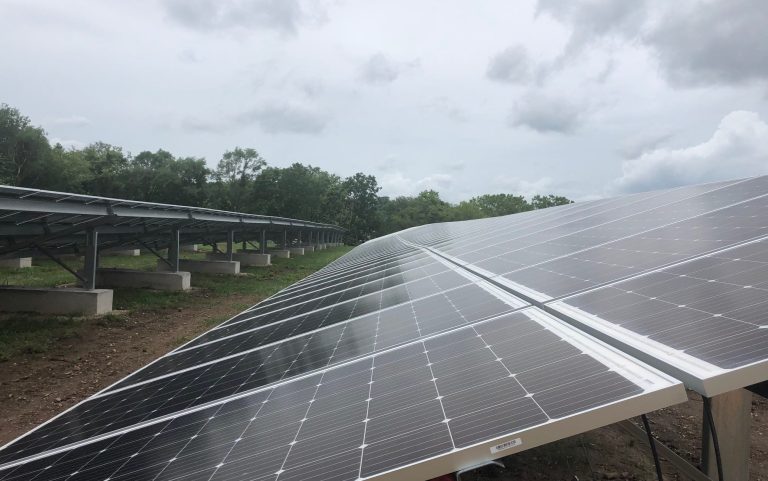
ComEd Community Solar Projects Delivering Monthly Savings to Income-eligible Customers
ComEd today announced that subscribers to three community solar projects designed for income-eligible customers are now receiving credits that will provide approximately $1,000 a year in savings on their electricity bills for up to three years.
The projects – one in Rockford, Ill., and two in Kankakee, Ill. – were developed in conjunction with ComEd’s Give-A-Ray program, a new offering enabled by Illinois Solar for All, a state initiative to make solar energy more affordable for income-eligible households. Community solar allows customers to participate in the benefits of clean solar energy without installing panels on their own homes. Participants subscribe to a solar energy project and earn credits on their monthly utility bills for their portion of the energy produced by the solar project.
Give-A-Ray is the first program of its kind in Illinois. The three projects serve a total of more than 560 customers, and ComEd pays their monthly subscription fees. Subscribers to the Rockford project started receiving monthly bill credits averaging $83 in August, and Kankakee participants began receiving credits in October. Give-A-Ray projects are open to income-eligible residents with an active ComEd account who live in the communities ComEd serves. While the three projects are currently fully subscribed, customers can learn more about the program requirements and register their interest for future openings at: www.ComEd.com/GiveARay.
“We are encouraged to see ComEd customers taking advantage of Give-A-Ray as we continue to increase access to solar energy across northern Illinois, with a focus on our neighbors in under-resourced communities,” said Scott Vogt, vice president of strategy and energy policy at ComEd. “We are closely monitoring these projects and engaging subscribers through this three-year demonstration phase with an eye toward expanding the program. The future is bright for solar in Illinois, and we want everyone to be able to participate regardless of their income.”
“The chance to participate in ComEd’s Give-A-Ray program could not come at a better time given the rising cost of energy and daily living,” said Brenda Booth, who subscribes to the Rockford project. “The savings on our energy bill are real and we’re happy to support the growth of clean energy in our community.”
The Rockford Give-A-Ray project, developed by Trajectory Energy Partners of Illinois and owned and operated by Massachusetts-based Nexamp, Inc., is located on a previously empty field north of downtown. It has more than 6,600 solar panels with 2.6 megawatts (MW) of solar generation capacity. Trajectory Energy also developed the Gar Creek project in Kankakee while BW Fosler, Freeport, Ill., managed construction. The Gar Creek project is located in a low-income neighborhood and its two solar arrays contain a total of 12,000 solar panels with a combined solar generation capacity of 4.8 MW.
“Community solar is unique as it offers customers access to the benefits of clean, solar energy by providing them with meaningful savings on their energy bill,” said Nathaniel Dick, director of energy, Preservation of Affordable Housing, Inc., which supported enrollment in the Gar Creek Solar project. “ComEd’s Give-A-Ray program is the best program we have seen to help reduce the energy burden at sites for low-to-moderate income families, some of whom will have zero-dollar energy bills in the coming months.”
By the end of this year, ComEd expects to have more than 80 community solar projects interconnected to its grid and serving approximately 30,000 residential customers. The company estimates that it will increase solar generation on the ComEd system from a current level of almost 500 MW to 2,700 MW by 2030, including rooftop and community solar systems. The number of residential and business customers who have installed solar systems has grown from 700 at the end of 2016 to almost 30,000 at the end of June 2022.
Source: ComEd